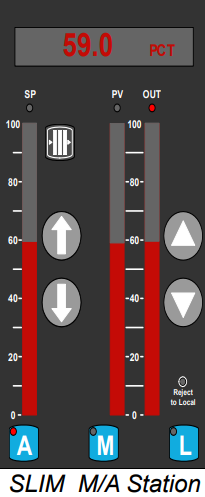
EMERSONWestinghouse Nuclear Automation
25
. Site Testing
– site acceptance tests and po
wer ascension test
Feed Water (FW) Control Systems Feed Water (FW) Control Systems
In delivering digital FW control systems,
W ti h li Westing
house applies:
• High Quality Application Software Development
Process
– Software Requirements Document
– Software Description Document
– S ft Lif l Pl S
oftware Lifecycle Plan
– Failure Modes and Affects Analysis (software and hardware)
– Software Hazards Analysis
– P i t t ith 10CFR50 A di B Processes consis
ten
t with 10CFR50
Appendix
B
where commercial grade application software can be
applied in critical applications
Feed Water (FW) Control Systems Feed Water (FW) Control Systems
Westinghouse NA uses “defense in design” to
ens re deli er of a high q alit prod ct ens
ure deli
very of
a high
q
uality prod
uct:
• Plant Specific Models and validation testing with application in closed
loop demonstrates deterministic behavior of the application early in
d i es gn process
• Applications are partitioned on controllers such as not to cause failures
that could add positive reactivity or effect plant design basis
• Reliance on the control network is limited Reliance on the control network is limited
– controllers and associated controllers and associated
I/O can continue to function with loss of network
• I/O designed on controller loss to revert to known or benign state
• For critical control component, a hard control station is provided to For critical control component,
a hard control station is provided to
operator manual control – another layer of redundancy
• Redundancy of system components at all levels
Existing Analog Feed Water Control Existing Analog Feed Water Control
● Historically, Steam Generator Water Level has
been difficult to contro
l
– Analog-based systems are limited
– Per INPO data; second leading system for plant trip
– Steam Generator (SG) shrink and swell phenomena
– Steam & Steam
& feedwater feedwater measurement unreliable at low power levels measurement unreliable at low power levels
– Manual control with multiple operators required to bring up unit
– Prone to single points of failure
Analog Inputs – no active redundancy
Manual operator action in detecting input failures
Modulating Outputs single driver card
29
Modulating Outputs
– single driver card
Typical Advanced Digital Feed Water
System (ADFCS) Configuration System (ADFCS) Configuration
● 1,2, 3 or 4 Redundant Controllers:
● HMI -T O t W k t ti ith ft t l Two
Opera
tor
Wor
k
s
t
ations with soft con
trols
– M/A Stations for FW Valve & FP Controls
● One Engineer One Engineer s/Data ’s/Data Base Server Workstation Base Server Workstation
● Network Equipment – Fast Ethernet Switches
● Anti-virus Station
● New Cabinets or retrofit of existing cabinets
● SLIM M/A’s for Main, Bypass and Feed Pumps

ADFCS
– Main Control Room Main Control Room
● Redundant operator stations & LCD
displays in MCR displays in MCR 59 0 PCT
● SLIM M/A’s for all modulating valves, &
feed pumps
Add d l f d d
59.0 PCT
100
SP PV OUT
100
Add
e
d layer o
f re
dun
dancy upon
controller failure
Works seamlessly with soft control
80
60 60
80
● Remove signal selector switches
● Remove select recorders – steam/feed
water, wide and narrow ran
ge level 20
40
20
40
, g
● Remove individual channel indicators &
replace with median
● Select indicators can remain
“live
”
Typical ADFCS Architecture Typical ADFCS Architecture

ADFCS
– Design Overview Design Overview
● Improved system reliability via signal selectors
– Narrow Range Level
– Wide Range Level
– Feedwater Flow
– Steam Flow
– Steam Pressure
– Feedwater Tem
perature
– Turbine Impulse Pressure or Nuclear Power
– Feedwater Header Pressure
( ) FP turbine runback)
● Improve System performance by integrating feed pump governor controls
ADFCS
– Design Overview Design Overview
● Proven Control Application – third generation
design consistent with AP1000 design consistent with AP1000
– Low and High Power Controllers
Bumpless Transfer between Low Power and High
P C t lM d Power
Con
tro
l
M
o
de
– Feedwater Temperature Compensation
Low Power Level Controller gain & reset adjusted Low Power Level Controller gain
& reset adjusted
based on feedwater temperature
Compensates for the effects of shrink and swell in
ll t eve
l response
to fd t ee
dwa
ter fl i ti flow variations
– High Power Level Controller proportional gain and
integral time adjusted based on steam flow
35
integral time adjusted based on steam flow
ADFCS
– Design Overview Design Overview
● Proven Control Application (cont’d)
– Load Index Load Index
Wide Range Level
Anticipates need for flow change at low power
– Automatic transition from bypass valve to main feed Automatic transition from bypass valve to main feed water regulation valve
– Capability of operating with one valve in manual and other in auto other in auto
– Control Valve Linearization & Performance
Compensates for non-linearities in valve characteristics and ensures an effective and stable
control response
Position feedback provides means to detect sticking or sluggish valve response and alert the operator





























































































































